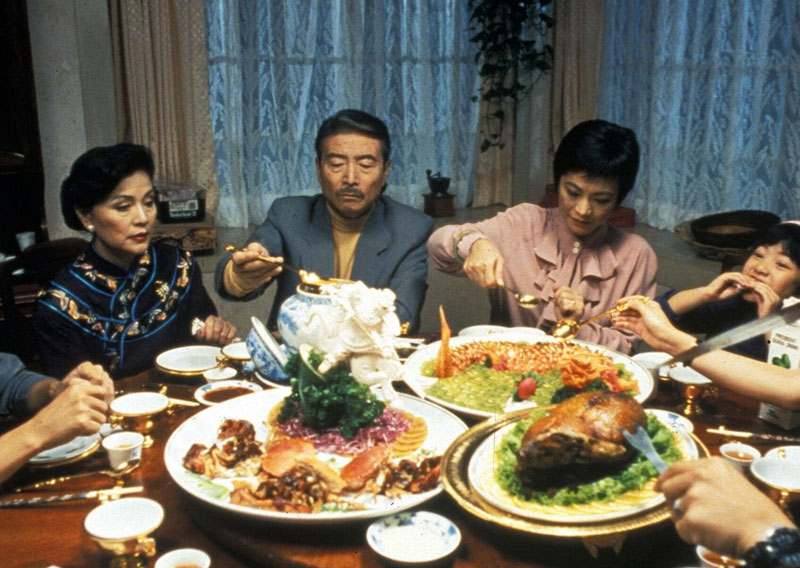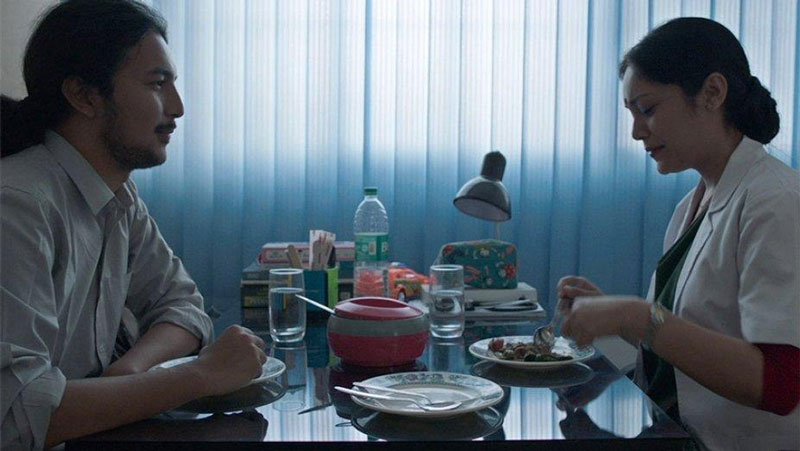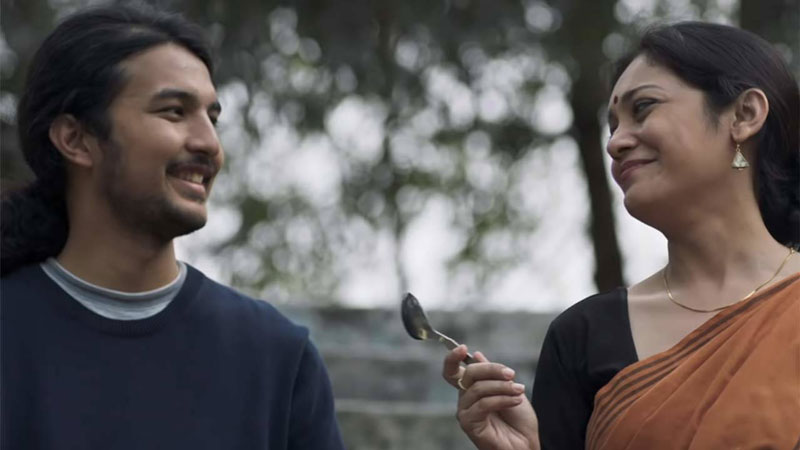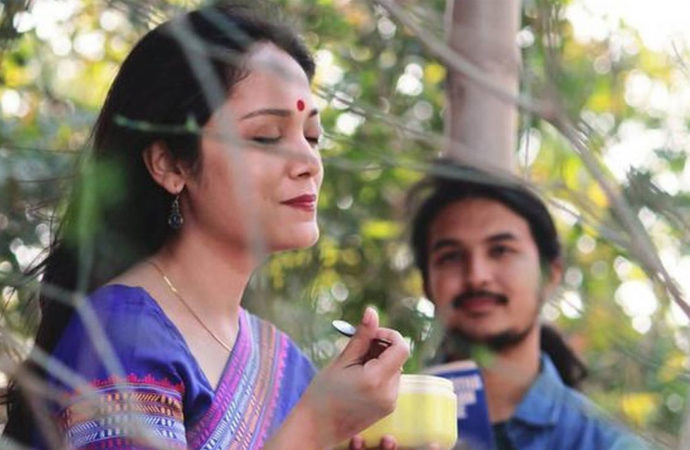Food is the denominator of myriad dimensions in human life. On one hand, it is the decider of poverty, on the other, of opulence. Films have often used food as an instrument for articulation, mediation and subversion. Culturally, food occupies an integral space to reckon with. It is historically driven, sociologically woven, politically motivated. Food in films also serves as a tool to establish the existing social dynamics, their interactions, and ethnography and audience behaviour. A spate of food films can be detected in the history of world cinema.
India is known for its diversity in cuisine. From the mountains in the North to the Southern beaches, the taste bud is ubiquitous. Besides food in films constituted the background foray or party of the grand mise en scene; it also can act as a tool for resistance. The two films from India represented here used food to subvert the ritualistic preconditions of the society. Though food films are usually considered as fun films gateway to understand a nation’s cuisine, their culture and social fabric, sometimes it might act otherwise. And that very aberration is the mainstay of this article.

Eat, Drink, Man, Woman (Ang Lee, 1994)
A quick detour into world cinema reminds us a spate of films like Ang Lee’s Eat Drink, Man, Woman with a thread of relationships between a widower and his rebonding with his daughters through a journey of food spectrum. Similarly, one witnesses a very gorgeous Penelope Cruz in Women on Top where food becomes her way to empowerment. Hollywood’s recent gig in the similar subject in the film Chef where the jobless chef Carl Casper starts his own food truck and reunited with his estranged family. The sheer purpose of this sub genre is not only to lure the audience in the platform of diverse culinary images but also summon them into various cultural constructs around it.
Last year two films from India (not Bollywood) incorporated food from their regions to make a distinctive statement. In India, food is a celebration of life. In festivities, politics, regional heterogeneity food has its omnipresence. Theodore Collatos¹ in his article once accused films for not including food as the main agent in the film making process. To quote him “Either it’s completely eliminated from the story altogether (have you ever seen Bogart eat?), or it’s relegated to window dressing, functioning simply as atmosphere”. The films referred here not only treated food as the chief element in their art form but also utilized it as a mighty sword to rethink the status quo.
Aamis (The Ravening/Bhaskar Hazarika/Assam/108mns/2019) is apparently a film about food, especially long lost indigenous cuisine from the North Eastern part of India and a genuine passion for food particularly eating meat —which is evoking too many controversies with a Hindu Extremism gaining ground in recent times— binds two lonely souls together.
The innermost desire of human beings manifests in myriad ways and when love crosses all boundaries, it spills over and hunts for diverse ways of expression. Suppressed sexuality —extremely common for a hypocritical nation like India, where Kamasutra is written, sex is still considered to be a taboo—, illegitimate love founds refuge in cooking and serving one’s the own flesh to his beloved.

Aamis (Bhaskar Hazarika, 2019).
This transgressive sexual mores confronts the regressive society and subverts its age old stale practices. Food (meat) acts as agent to corroborate the ideology of love. The narrative grapples with Suman, a PhD student who is researching on the various meat eating practices of North East India, chances upon Dr Nirmali. Both of them have an innate orientation towards being adventurous about consumption of varied cuisines.
Their love for food slowly turned into taciturn passion for each other. Over several rendez-vous, they develop feelings for each other. The woman is married with a child and they are not unaware about the predicament of the situation. Suman, to woo his lover further, gets himself operated, cooks and feeds his own flesh to his beloved. Nirmali develops eerie pang for the human flesh gradually. What was a metaphor for immense love, turns into cannibalism and from one sinister basic instinct of human souls emanated another twisted one!
The reason behind Suman’s decision to feed his own meat to his beloved can be manifold. It might seem abnormal to the majority of human folks, but as Michael Foucault² in his seminal lectures at the College of France says: “With the ways in which medico-legal practices produced a psychologico-moral double of the legal offense, created the dangerous individual and eventually, through the functioning of power of normalization, came to constitute itself as the authority responsible for the control of abnormal individuals”. So, the very question of normalcy and abnormality is in interrogation!
It’s a very complex cobweb of interplay of human instincts where her aboriginal desire for cannibalism coupled with repressed sexuality and societal transgressions on the surface challenges every social mores. It might seem to be a dangerously immoral film, but a close inspection might depict a thoroughly different picture. Decisive and taut as the two main characters are, the film redefines the age old concept of love, especially is a sexually deceitful country like India, where emotional and gastronomic desires intersects and how! Unlike the mainstream popular films in India, it is not a feel good film; it perpetrates its audience and remains in them for a long time. The mechanisms of control were imposed upon them eventually, but their soul unites.

Aamis (Bhaskar Hazarika, 2019)
The next film is Biriyani (Flavours of Flesh/Sajjin Babu/Malayalam/95mns), Biriyani is the name of a food palate and it is a pan Indian delicacy. Originally a staple for Muslims of Persia incorporated itself into the cultural fabric of Indian subcontinent. Biriyani, etymologically called Birian, was brought to India by the Mughals³. Narrated from a minority Muslim woman’s point of view, the film is blatant, dark and intrepid. Khadija, the protagonist, lived an oppressed life in her husband’s house without any murmur. His brother, all of a sudden, is turned out to be a main suspect of a global Muslim terrorist group ISIS.
Correspondingly, Khadijja is ostracized by the society, tormented by the police. Her house is burnt down and her husband divorced her through a sms. Her divorce furthermore heightens her trauma; her mentally disabled mother dies in a rude shock. All alone,Khadijja rebels against the dreadful world around her. She rather takes them for a ride, appropriating her own cloistered sexual desires. She embarks upon a journey hitherto unknown to her, it’s a journey of self discovery and here also food becomes her partner in crime. The stigma attached to the Muslims as terrorists worldwide, a minority woman’s plight and consequent search for freedom have been explored quite intimately. Her way of vengeance, her fury is palpable and palatable.
Being a part of the community, the Director raises his voice on behalf of the womenfolk. To quote him “Majority of the Men consider their women as mere objects of desire”. Women in India from their early childhood taught to be domesticated, considerate and timid. They are voiceless creatures especially when poor, belonging to the lower caste and backward. Khadija was nonexistent for the society unless she understands the tricks of the game. She gradually discovered ways to negotiate with the social dynamics and her empowerment comes along with. The filmmaker wittingly has used this particular delicacy as a weapon of insurrection.
Therefore, food can be a potent signifier of protest provided one knows how to use it polemically. In these two above mentioned films, food is not used as a decorative sense; rather its potential has been realised and used symbolically and metaphorically to assert the characters’ psychological and social position. Also, it dramatized the situations further, to add fuel to the fire.
- Collatos, Thedore: The Politics of Movie Food, January 6,2017.
- Foucault, Michel: Abormal.Lectures at College de France,1974-1975.
- Dhillon,Kris: Indian restaurateur(2013) The New Curry Secret, Little Brown Book Group, Page:134.









No one has posted any comments yet. Be the first person!